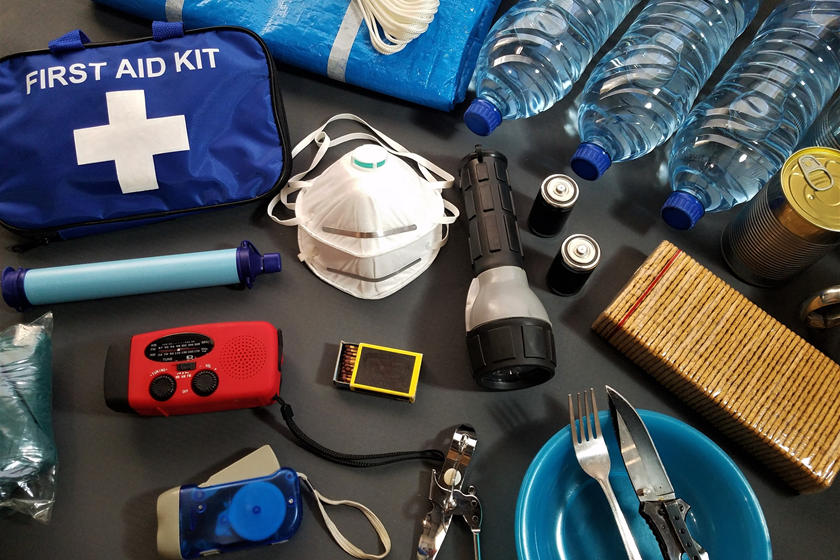It took a lot more than just an increase in power and some special tires.
Bugatti is looking forward to an exciting new path as its future becomes entwined with that of EV-maker Rimac. But as exciting as the possibilities for what's coming are, we sometimes forget just how special everything that Bugatti has already achieved is. One of its greatest accomplishments was becoming the first automaker to reach 300 mph in a production car, and the way that the Chiron Super Sport 300+ got there is down to more than just an increase in power. Join us as we explore the French automaker's astonishing engineering solutions that helped it reach 304 mph in August 2019.
We've glossed over the enhancements that this hypercar received over a regular Chiron before and have considered the differences between it and the Pur Sport variant too, but now we can see just how much changed on the so-called "regular" Super Sport that followed the 300+.
We start with the aerodynamics of the car, which were enhanced partly through new air curtains that help smooth the airflow over the wheels. In addition to traditional air curtains, secondary curtains from the headlights and additional air outlets on the front arches further define the look of the Super Sport, which has been "shaped by speed."
Naturally, you want the air to move over the car as quickly and cleanly as possible, but you also need some to be sucked into the car for cooling. Bugatti engineers worked hard to ensure that the optimal amount of air would pass over the radiators at full load. To achieve this, the SS has its main radiator mounted roughly 8% higher. At high speeds, those air curtains see most of the air flow past them while top speed mode also positions the front diffusers more horizontally with less air going to the wheel arches, thereby improving downforce.
Evidence of the hard work done at the front is also found in nine cylindrical air outlets in the front arches. Inspired by the style of the Bugatti EB 110 SS and shaped by Computed Fluid Dynamics (CFD), these help increase downforce without adding to resistance, and at 236 mph (380 kph), generate between 44 and 66 pounds of additional downward pressure. At the same time, the new wings improve brake cooling by drawing air out of the wheel arches without sucking up stones. The handmade wings weigh around 8.8 pounds, are fashioned from carbon, and have been developed to improve pedestrian safety while also preventing lift of the front end.
One of the more obvious changes when you see the car side-by-side with the normal Chiron is the longtail, which extends the body by 9.8 inches. This, in conjunction with an enlarged diffuser profile, helps create a breakaway area at high speeds that is as small as possible, significantly reducing wind resistance. Meanwhile, an 8% larger rear wing makes the airbrake more efficient but can retract almost completely for when you're chasing triple-digit speeds.
"In top-speed mode, the Chiron Super Sport generates only minimal resistance, making it perfectly balanced and as aerodynamically efficient as possible," says deputy design director Frank Heyl. "The Super Sport generates just enough downforce to stay stable above 400 kph. That's essential at this speed to avoid putting excessive pressure on the tires."
Despite all the aero work on the car, including that new area of low pressure created by the longtail and the larger diffuser, the exhaust gets no backflow. It's well regulated in terms of temperature too. With a double-wall structure insulating the titanium bezel, the air around the exhaust cools the exhaust - something you definitely want to consider when the exhaust gasses can reach temperatures of up to 1,562 degrees Fahrenheit. The air is also channeled in such a way that the surrounding carbon components are not overheated. Even the turbos themselves are more efficient despite larger compressor wheels. At full load, 4.8 tons of air flow through the four turbochargers, but throttle response is similar to that of the original car with its smaller turbines.
As we already know, the 8.0-liter quad-turbo W16 engine produces 1,578 horsepower, up by 98 horses, and all 1,180 lb-ft of torque is available from 2,250 rpm to 7,000 rpm, up from a peak of 6,000 rpm in the regular car. Furthermore, the rev limit has been raised by 300 rpm to 7,050 rpm. With more rev range and increased performance, the engine undergoes more stress, so the chain tensioner, cylinder heads, valve springs, vibrational dampers, air-con compressor, water pump, and more were all redesigned to cope. Seventh gear is now also 3.6% longer, making the car 12% or four seconds quicker to 400 kph with a time of 28.6 seconds.
The chassis was redesigned as well to take into account the change in axle load that came with the new longtail design, while new Michelin tires (Pilot Sport Cup 2) were optimized for high speed and are wrapped around new lightweight wheels. These magnesium rims weigh around 35 pounds less than regular Chiron wheels, thereby reducing unsprung weight.
We often call the Chiron (and its numerous variants that include the Super Sport) a technical masterpiece. It's an engineering wonder, but it's hard to fathom just how wondrous it is. With these details being released by Bugatti, we have a newfound appreciation for the exceptional work done in Molsheim. We would take our hats off to you, Bugatti, but the Chiron Super Sport has blown them away.









Join The Discussion